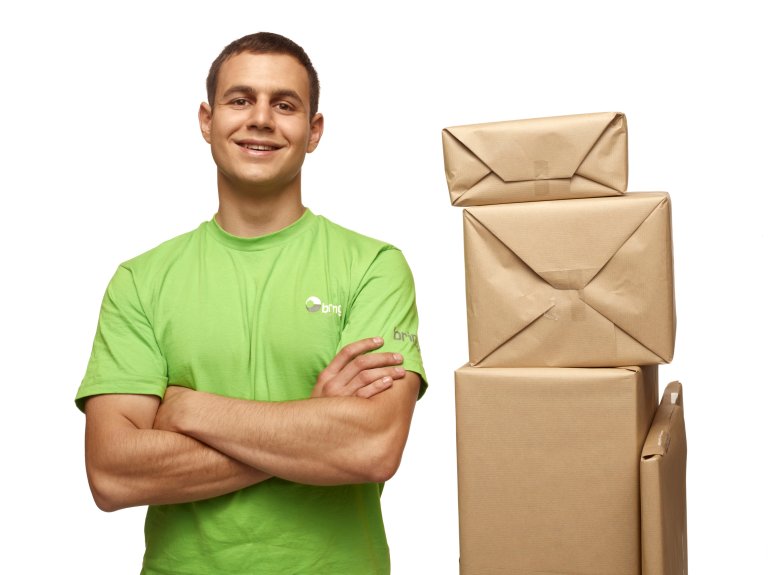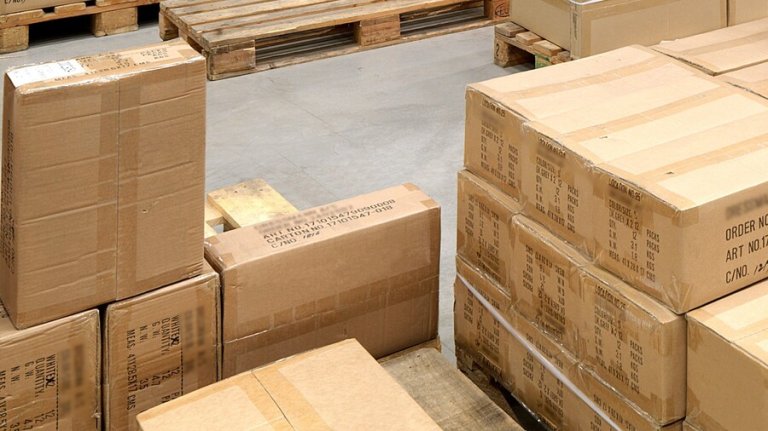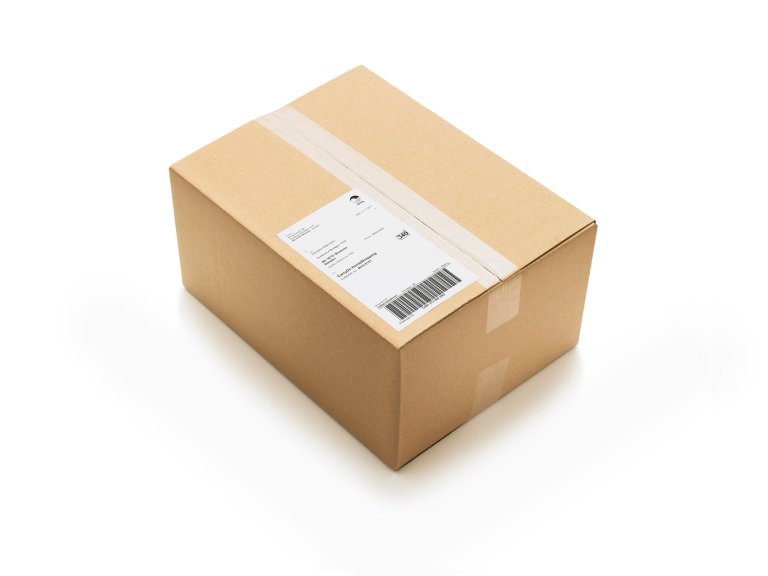How to package a parcel to withstand transport and handling
When choosing your packaging, you should consider its material, strength and size.
It is crucial to use high-quality packaging to ensure that your shipment is protected throughout the transportation process. There are many packaging suppliers in Sweden, so find out what they offer and what suits your particular shipment. It might be a good idea to talk to the supplier and explain your needs and what you are sending. This will ensure that you get sturdy enough products to protect your goods so they arrive in a good condition.
Keep these three factors in mind when purchasing packaging:
-
Material
Always use high-quality corrugated cardboard boxes when shipping parcels. We recommend using double-walled or triple-walled corrugated cardboard boxes for fragile or heavy items. Double and triple-walled cardboard boxes are reinforced and much more stable than single-walled boxes.They therefore provide better protection from knocks and impacts during storage and transport.
If you choose to reuse old boxes, which is good from an environmental perspective, it is important to ensure that they are in a good shape. They may have lost some of their strength and stability and therefore don’t offer the same degree of protection. -
Strength
Check the manufacturer’s stamp for information about the material and strength of the box. Ask the box supplier for information if necessary. Check the box's specifications to choose packaging suitable for the weight of the shipment. -
Size
Half-empty boxes may collapse and overloaded boxes may burst. To prevent this happening, choose a box that is the right size for what you are sending.

Remember this when packing your items
Tips on the best way to pack your goods to help you avoid the most common mistakes.
|
|
|---|---|
Use high-quality boxes! Sharp objects or weights above 10 kg? Use double or triple-walled boxes. | Do not reuse boxes that have lost their stability and strength. |
Make sure the outside of the box has enough free surface area to be labelled. | Do not use cardboard boxes with any tears, dents or corner damage etc. |
| Use padded envelopes for small items that do not break easily or contain liquids. | Avoid half-empty boxes. It is important not to overload the boxes. |
It is important to remember the following:
- The packaging must not be damaged when the goods are delivered to us. We are not able to replace packaging that is already damaged.
- The product’s original packaging is not suitable as transport packaging!
These boxes must therefore always be packed inside a larger box with space for cushioning. - Some items may not be sent in the usual way.
Do you want to know the best way to pack and package goods that do not fit inside standard boxes? Our Customer Service Team will be happy to assist you.
Your packaging supplier can also offer good help and guidance.
Filling material – just as important as the external protection
The filling material protects your products from impacts during transport and handling. The many different types of filling materials include bubble wrap, packing foam, packing chips, air pillows, paper and corrugated cardboard. All have different properties and meet different packaging requirements. Choose material that is appropriate for the products you are sending.
Once you have found a suitable cardboard box for the items you are shipping, you can then pack them in a safe and cost-effective way. If your shipment consists of several items, you should wrap them individually to prevent them from damaging each other. It is a good idea to use a divider to give additional protection to particularly fragile goods. Put protective cushioning material in the bottom of the box and place the items on top of it. Place the items in the middle of the box leaving 6 cm between them and the walls.
It is important to fill all voids inside the box to prevent the contents from shifting during shipping. Both the box and its contents can become damaged if the products move about during transit. If the product you are packing is very heavy, the actual filling material must be able to cushion its weight. Your packaging supplier can help you select the most suitable internal packaging for your goods.
Summary of internal protection
Keep these tips in mind when packing parcels to ensure that they reach your customers safely.
|
|
|
|---|---|
|
Wrap all items individually in cushioning materials. |
Do not overload the box as this may cause it to break or burst. |
|
Place the items in the centre of the box on a bed of cushioning and at least 6 cm away from the walls of the box. |
Fragile items should be packed so that they do not touch one another or the outer walls of the box. |
|
Fill all voids with packing chips or some other suitable material. Finish by adding cushioning material at the top. |
Fill all voids inside the box to prevent the products from moving about, becoming damaged and causing damage to the box. |
It is important to remember the following:
- The packaging must not be damaged when the goods are delivered to us. We are not able to replace packaging that is already damaged.
Liquid content or other content where leaking is a risk
Liquid products must be packed in secondary packaging. This means that the product must be packed inside a leak-proof receptacle and then have extra filling material packed around it. A good way to do this is to seal the product inside a plastic bag, for example, which you then pack and protect inside a smaller box than the one you are sending. Also remember to leave enough space to fill with cushioning material between the inner box and outer box.
The same method is recommended if the contents of any of the goods you are sending are liquid, greasy or have a strong odour.
Many goods with liquid content may be everyday household items that are classified as dangerous goods and are therefore subject to special provisions for carriage.
| Summary of liquid content |
|---|
|
Fragile items (such as glass and china)
It is especially important that fragile items, which can break easily, are packed individually and with sufficient cushioning material. Dividers and box inserts (box inside the box) are useful packing aids.The manufacturer’s original packaging can be used as the inner box. Remember to leave enough space to fill with cushioning material between the inner box and outer box. It is a good idea to use a double-walled box.
| Summary of glass and china |
|---|
|
It is important to remember the following:
- The packaging must not be damaged when the goods are delivered to us. We are not able to replace packaging that is already damaged.
Protect the parcel by sealing it properly
Make sure that the parcel is properly sealed to prevent it from coming open in transit and the contents falling out. The tape you choose and the way you attach it may affect how the contents are protected while in transit.
Use strong tape, approx. 4-5 cm wide. Different strengths of polypropylene or glass fibre tapes are normally used. The paper tape that is available nowadays is strong enough and suitable for sealing packages and is a good environmentally sustainable option.
Use strong, pressure-sensitive tape, such as: |
Avoid using tapes that are not suitable for parcels, such as: |
|---|---|
|
|
Make sure that you have taped securely along all edges and openings. Many packing experts seal a box using the H-taping method:
- First secure the flaps by applying a strip of tape along the middle of the box.
- Then apply two strips of tape along the edge on both ends.
- The tape should extend securely over the corners.

It is important to remember the following:
- The packaging must not be damaged when the goods are delivered to us. We are not able to replace packaging that is already damaged.
Labelling the parcel with the address and barcode
Finally, you need to label your parcel correctly so that it gets to its destination. It is therefore important to label the parcel clearly. Each parcel must have a label with the recipient’s address and other necessary information. A barcode is generated and the parcel is scanned during shipping and handling so that you and the recipient can follow it. Make sure that you have entered the correct address and postal code. This is important for the parcel to arrive on time.
- If you are using a shipment label, attach it to the top of the parcel, making sure it is clearly visible.
- The whole of the label must be visible on one side of the parcel. Do not place it over a seam or fold it over an edge.
- If you are reusing a cardboard box, be sure to remove or cover all old labels and barcodes.

Finally, remember the following:
|
|
|
|---|---|
|
Check that the barcode on the label is in a good condition (easy to read). |
Do not let other labels or tape cover any part of the shipment label. |
|
Make sure the whole label is secured smoothly on the parcel, without any creases, and is easily visible. |
Do not place the label over a seam or fold it over the edge of the parcel. |
|
Place a copy of the label inside the box so that the carrier will be able to identify the parcel if the external one becomes detached or damaged. |
Do not cover any part of the label with plastic or other shiny material that may be reflective and make the label unreadable. |
Find out more about how you can avoid unnecessary delays in deliveries due to issues with barcodes.
It is important to remember the following:
- The packaging must not be damaged when the goods are delivered to us. We are not able to replace packaging that is already damaged.